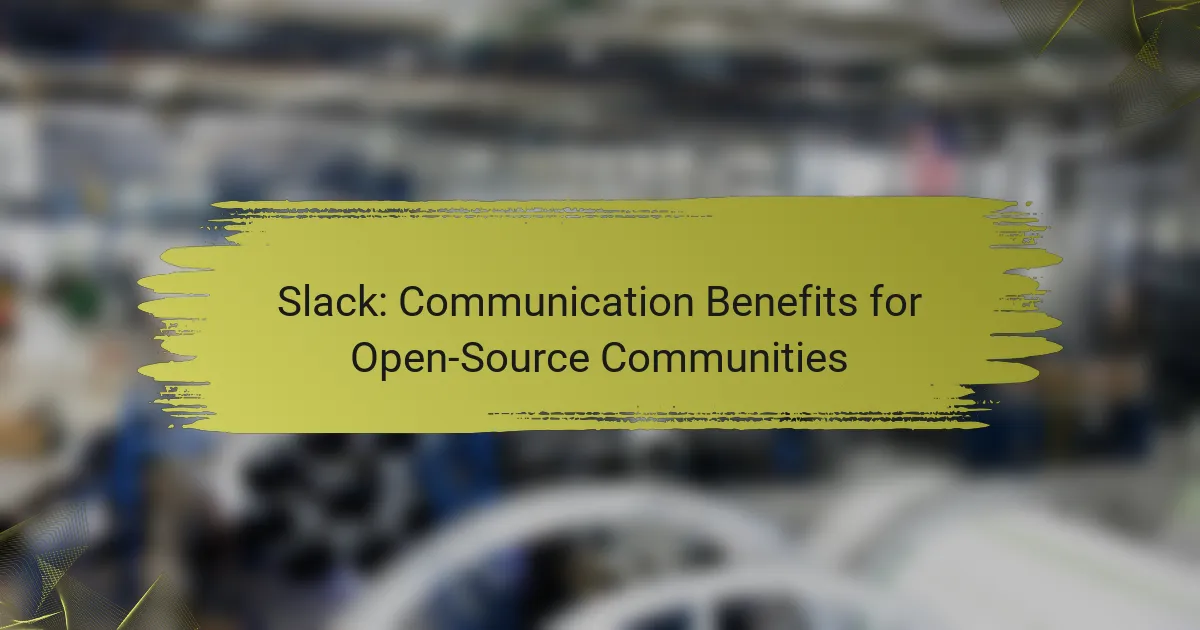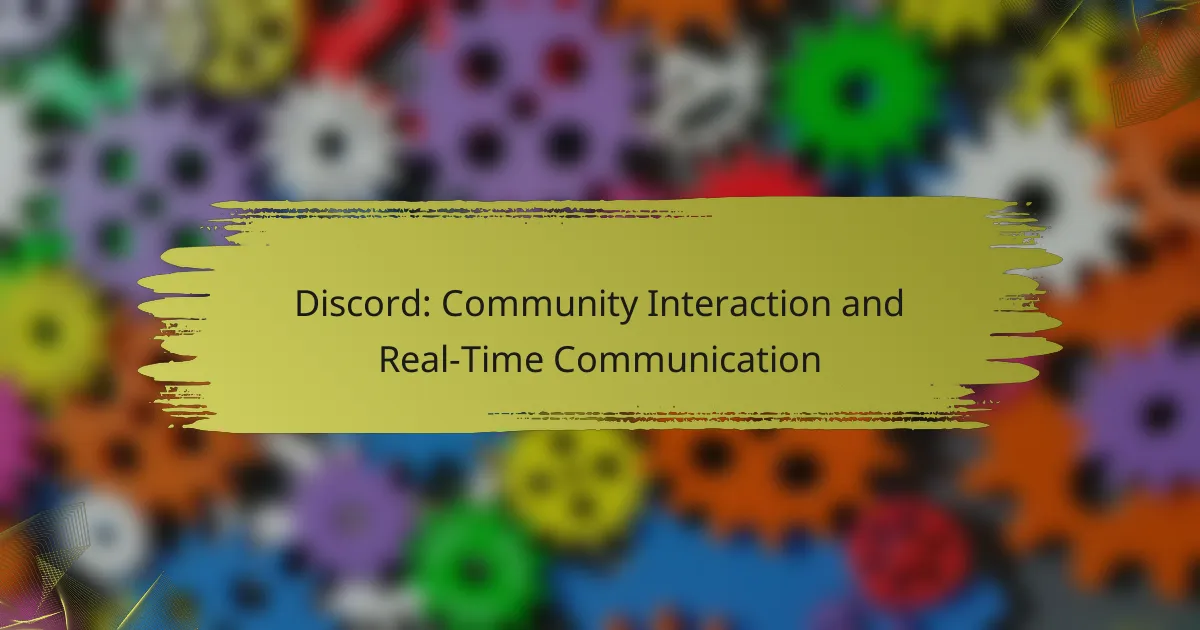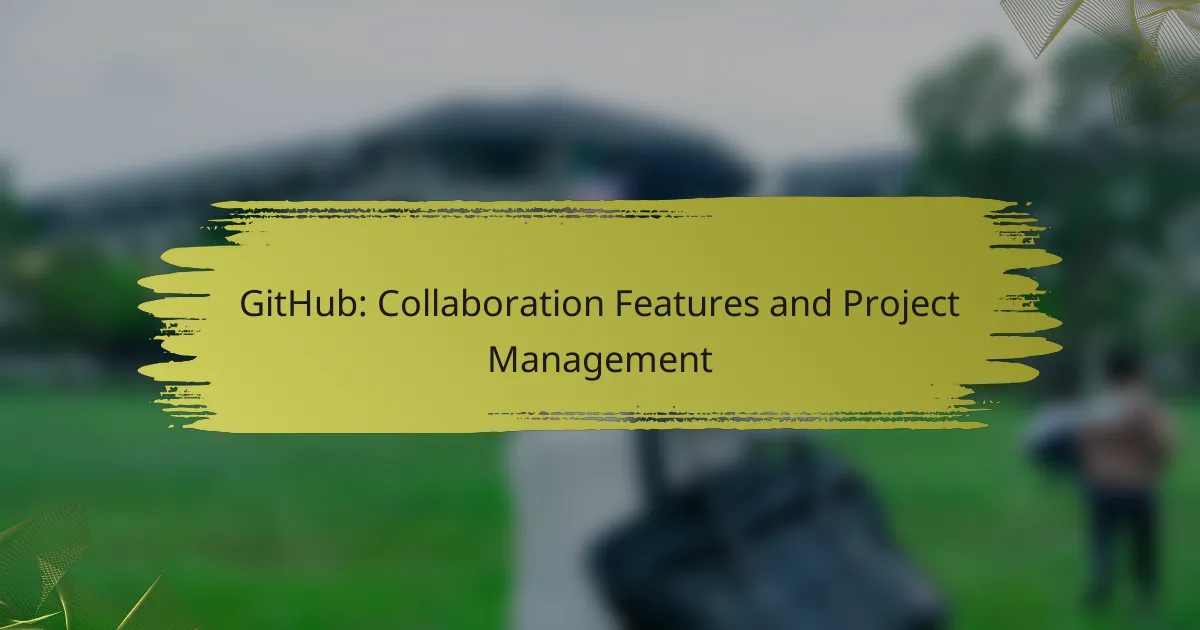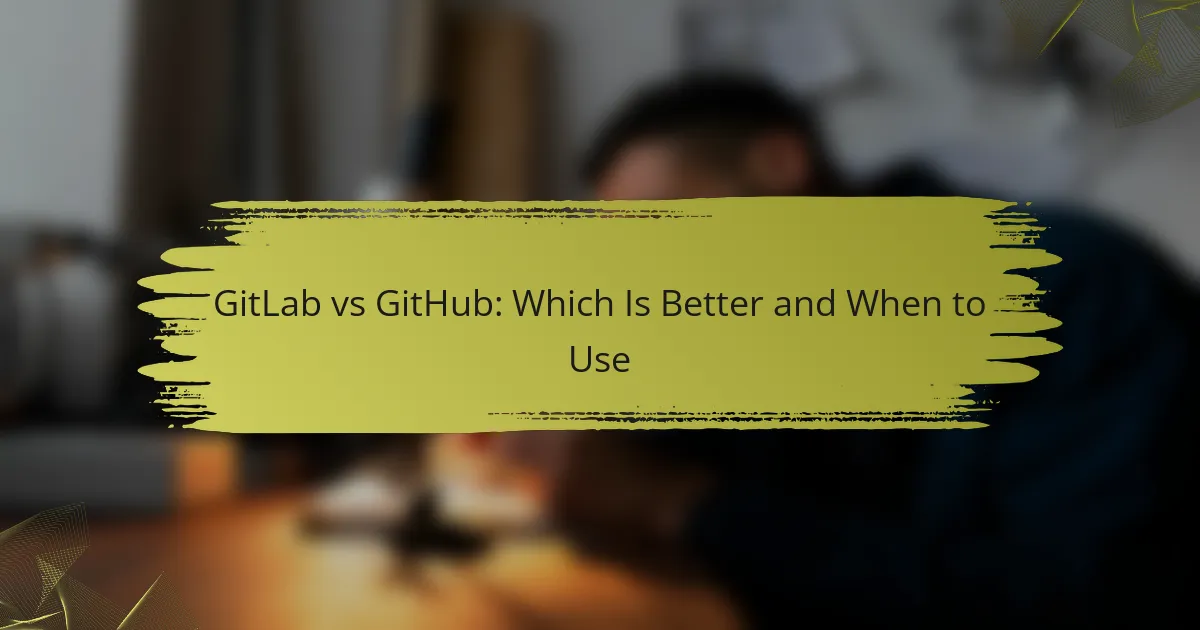Slack enhances communication in open-source communities by providing a platform for real-time interaction and collaboration. Its features, such as threaded conversations and searchable message history, enable developers and contributors to share ideas and resources efficiently, fostering a more engaged and productive environment for project development.
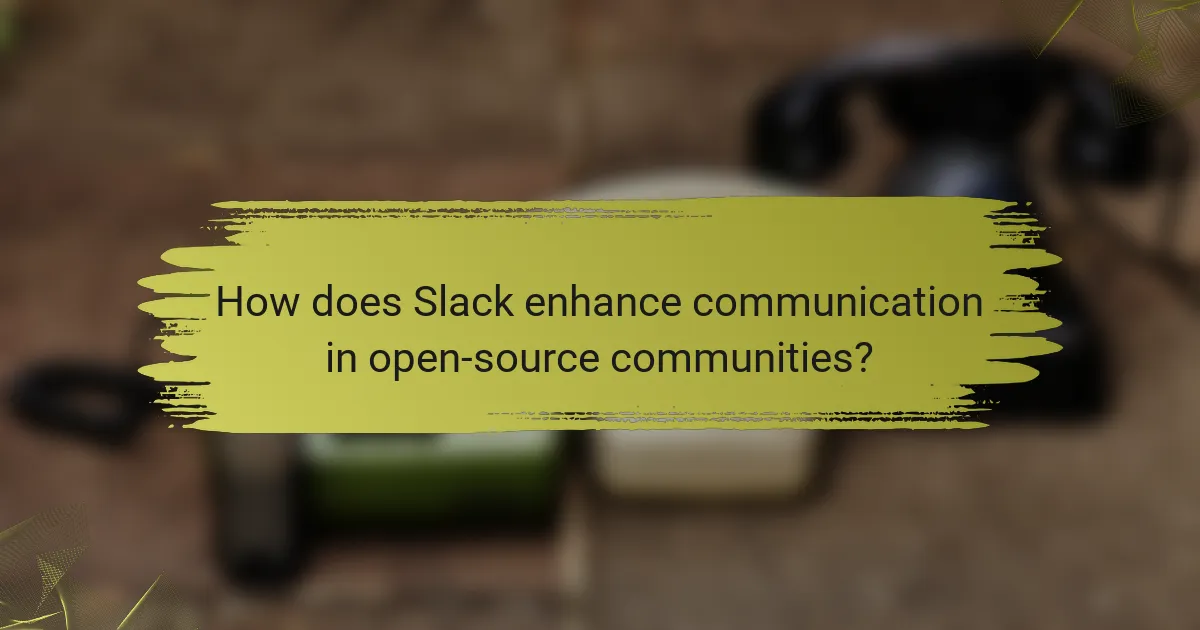
How does Slack enhance communication in open-source communities?
Slack enhances communication in open-source communities by providing a platform that facilitates real-time interaction, collaboration, and organization. Its features support developers and contributors in sharing ideas, updates, and resources efficiently, fostering a more engaged and productive community.
Real-time messaging features
Slack’s real-time messaging allows community members to communicate instantly, reducing delays in responses and decision-making. This immediacy is crucial for troubleshooting issues or brainstorming solutions, as it enables quick back-and-forth discussions.
Users can create direct messages for private conversations or utilize group chats for broader discussions. The ability to mention individuals or groups using @mentions ensures that important messages reach the right people promptly.
Integration with development tools
Slack integrates seamlessly with various development tools, enhancing workflow efficiency. Popular integrations include GitHub, Jira, and Trello, allowing users to receive updates and notifications directly within Slack channels.
This integration means that community members can track project progress, manage tasks, and respond to code changes without switching between multiple applications, streamlining the development process.
Channel organization for project discussions
Slack’s channel organization allows open-source communities to create dedicated spaces for specific projects or topics. This structure helps keep discussions focused and relevant, making it easier for members to find information and participate in conversations.
Channels can be public or private, enabling teams to control access based on project needs. For instance, a public channel can foster community engagement, while a private channel can facilitate sensitive discussions among core contributors.
File sharing and collaboration
File sharing in Slack simplifies collaboration by allowing users to upload documents, code snippets, and images directly within conversations. This feature eliminates the need for external file-sharing services, keeping all relevant materials in one place.
Members can comment on shared files, providing feedback or suggestions directly in the context of the discussion, which enhances clarity and reduces misunderstandings.
Customizable notifications
Slack offers customizable notification settings, allowing users to tailor their alerts based on preferences and project priorities. This feature helps community members stay informed without being overwhelmed by constant updates.
Users can choose to receive notifications for specific channels, mentions, or keywords, ensuring they only engage with the most relevant discussions. This customization is particularly beneficial in active open-source projects where multiple conversations may occur simultaneously.
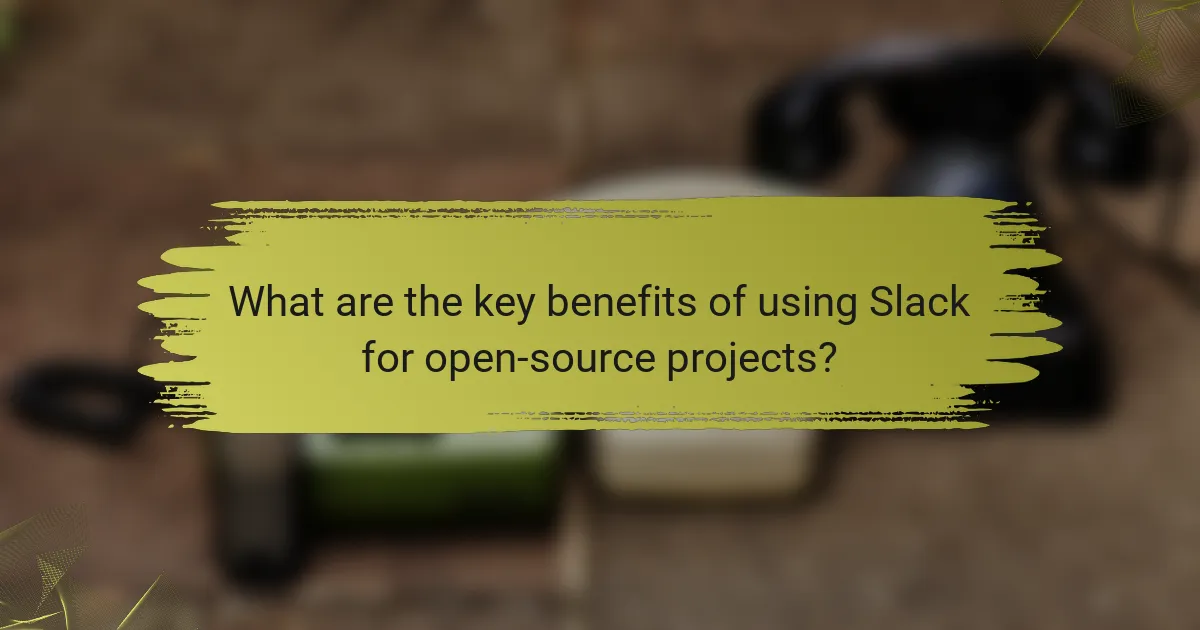
What are the key benefits of using Slack for open-source projects?
Slack offers several key benefits for open-source projects, including enhanced communication, streamlined collaboration, and increased engagement among community members. These features help teams work more efficiently and effectively, fostering a productive environment for project development.
Improved team collaboration
Slack facilitates improved team collaboration by providing a centralized platform for discussions, file sharing, and project updates. Channels can be created for specific topics or teams, allowing members to focus on relevant conversations without distractions.
Utilizing Slack’s integrations with tools like GitHub or Trello can further enhance collaboration by keeping all project-related information accessible in one place. This reduces the need to switch between multiple applications, saving time and increasing productivity.
Faster decision-making processes
With real-time messaging and notifications, Slack accelerates decision-making processes within open-source communities. Team members can quickly share insights, ask questions, and receive feedback, leading to more timely resolutions of issues.
By using polls or reactions in Slack, teams can gauge opinions or reach consensus swiftly, which is particularly useful when making decisions that require input from multiple stakeholders.
Increased community engagement
Slack encourages increased community engagement by providing a space for open discussions and knowledge sharing. Members can join channels that align with their interests, fostering a sense of belonging and encouraging participation.
Regularly scheduled events, such as Q&A sessions or project showcases, can be organized within Slack to maintain enthusiasm and keep the community active. This engagement is vital for the sustainability of open-source projects.
Enhanced transparency in communication
Slack enhances transparency in communication by allowing all members to access discussions and decisions made within channels. This openness helps build trust among community members and ensures everyone is informed about project developments.
Utilizing public channels for discussions, rather than private messages, promotes a culture of transparency. It also allows new contributors to catch up on past conversations and understand the project’s context more easily.
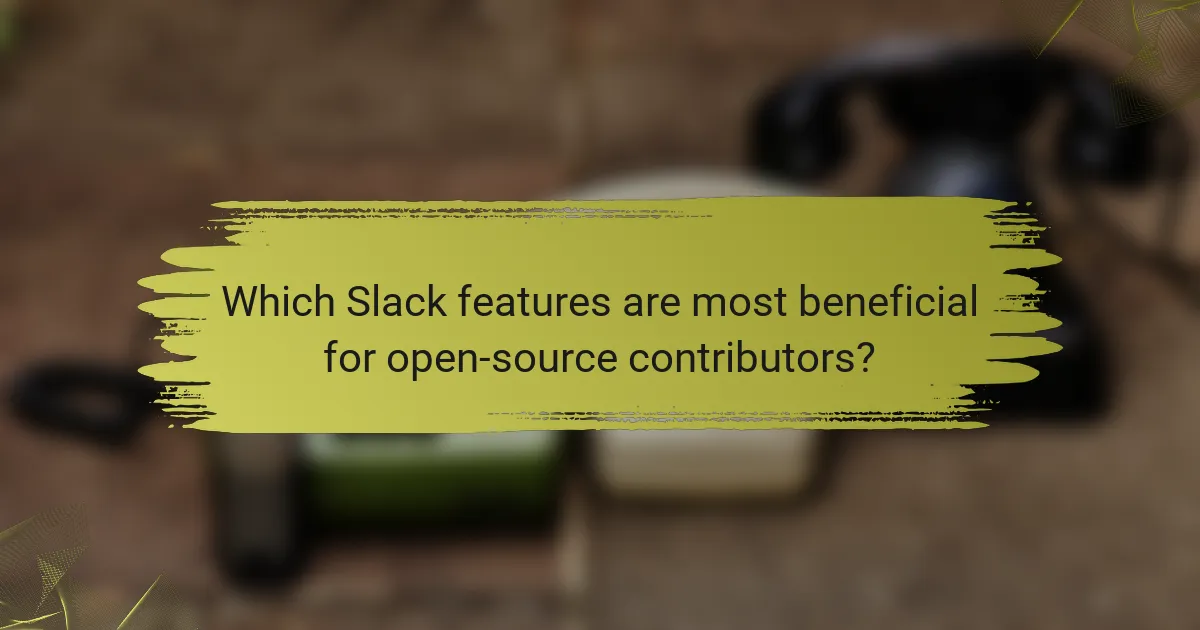
Which Slack features are most beneficial for open-source contributors?
Open-source contributors can greatly benefit from Slack’s features that enhance communication and collaboration. Key functionalities like threaded conversations, searchable message history, and app integrations streamline interactions and improve productivity within the community.
Threaded conversations
Threaded conversations allow contributors to discuss specific topics without cluttering the main chat. This feature is particularly useful for open-source projects where multiple discussions can occur simultaneously. By keeping related messages together, contributors can easily follow discussions and respond appropriately.
To effectively use threaded conversations, encourage team members to reply to messages within threads rather than in the main channel. This practice helps maintain clarity and ensures that important information is not lost in a busy chat environment.
Searchable message history
Slack’s searchable message history enables contributors to quickly find past discussions, decisions, and shared resources. This feature is essential for open-source projects, where historical context can significantly impact ongoing work. Contributors can search by keywords, users, or dates to locate relevant information efficiently.
To maximize the benefits of searchable message history, establish a consistent naming convention for channels and topics. This practice makes it easier for contributors to remember where to find specific discussions or files, enhancing overall project organization.
App integrations for productivity
Integrating apps with Slack can significantly boost productivity for open-source contributors. Tools like GitHub, Trello, and Google Drive can be connected to Slack, allowing teams to receive updates and manage tasks directly within the platform. This integration reduces the need to switch between multiple applications, streamlining workflows.
When selecting app integrations, consider the specific needs of your open-source community. Focus on tools that enhance collaboration and project management. Regularly review and update integrations to ensure they remain relevant and useful for the team’s evolving requirements.
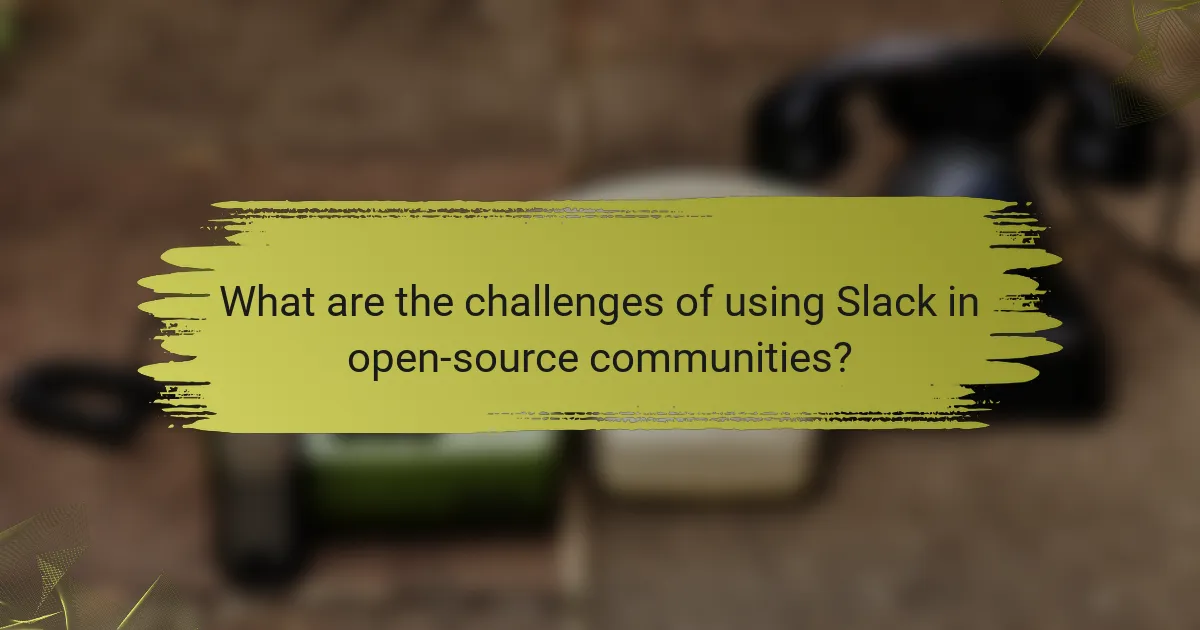
What are the challenges of using Slack in open-source communities?
Using Slack in open-source communities presents several challenges, including information overload, managing multiple channels, and privacy and security concerns. These issues can hinder effective communication and collaboration among community members.
Information overload
Information overload occurs when community members receive too many messages and notifications, making it difficult to focus on important discussions. In open-source projects, where updates and conversations can happen rapidly, this can lead to missed information and decreased productivity.
To mitigate information overload, consider setting clear guidelines for communication. Encourage members to summarize discussions and use threads for specific topics, allowing others to engage without being overwhelmed by constant notifications.
Managing multiple channels
Open-source communities often have multiple Slack channels for different topics, teams, or projects. While this can help organize discussions, it can also create confusion about where to post questions or share updates. Members may struggle to keep track of relevant channels, leading to fragmented communication.
Establishing a clear channel structure and purpose can help. Use descriptive channel names and provide guidelines on what type of discussions belong in each channel. Regularly review and archive inactive channels to streamline communication.
Privacy and security concerns
Privacy and security are significant concerns for open-source communities using Slack, especially when sharing sensitive project information. Data breaches or unauthorized access can compromise the integrity of the project and the privacy of its contributors.
To enhance security, utilize Slack’s built-in features such as two-factor authentication and access controls. Educate community members about best practices for sharing sensitive information and consider using private channels for discussions that require confidentiality.

How can open-source communities effectively implement Slack?
Open-source communities can effectively implement Slack by creating structured channels for communication and fostering an inclusive environment for all contributors. This approach enhances collaboration and ensures that discussions remain organized and focused.
Establishing communication guidelines
Establishing clear communication guidelines is essential for open-source communities using Slack. These guidelines should define the purpose of each channel, acceptable behavior, and the expected response times to maintain a productive atmosphere.
Communities can create a simple document outlining these rules and pin it in a dedicated channel. For example, guidelines might include using specific channels for different topics, avoiding off-topic discussions, and encouraging respectful interactions.
Training new contributors
Training new contributors is crucial for maximizing the benefits of Slack in open-source communities. New members should receive an orientation that covers how to use Slack effectively, including channel navigation, messaging etiquette, and where to find important resources.
Consider organizing a welcome session or creating a short video tutorial. Additionally, pairing new contributors with experienced members can provide personalized guidance and help them integrate smoothly into the community.
